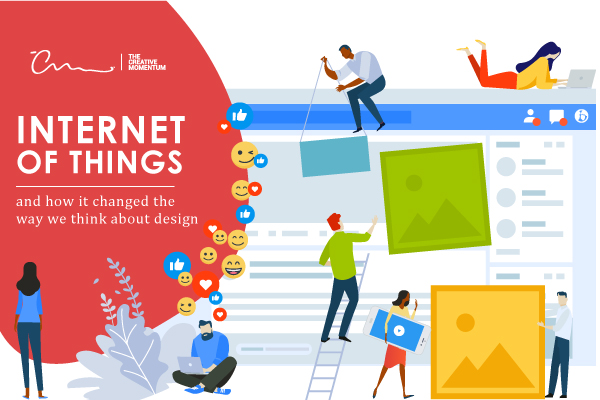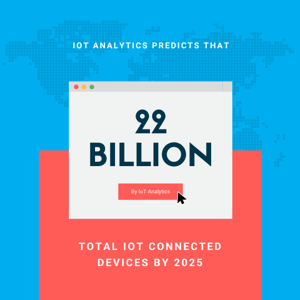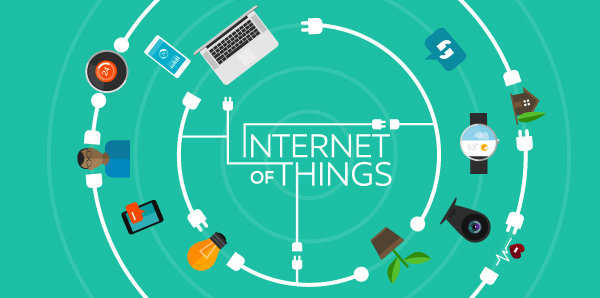 The Internet of Things (IoT) turned science fiction technology into a modern reality. Today, everything from your home speaker to your watch to your refrigerator is online and integrated. This presents an interesting challenge and an exciting opportunity for web designers and digital marketers.
The Internet of Things (IoT) turned science fiction technology into a modern reality. Today, everything from your home speaker to your watch to your refrigerator is online and integrated. This presents an interesting challenge and an exciting opportunity for web designers and digital marketers.
Rather than focusing solely on aesthetics, interface or backend capability, good design for the IoT requires a hybrid approach. The secret to IoT design success is being able to provide a seamless user experience that works in conjunction with the device’s features.
Let’s take a deeper look at the IoT and how it’s revolutionizing design.
What is the Internet of Things?
Exactly what is the Internet of Things? It’s a term you’ve heard a lot in the last few years, but the specifics are always a little fuzzy.
British technology pioneer Kevin Ashton coined the term Internet of Things way back in 1999, referring to radio frequency identification (RFID) technology. Ashton presented the idea that computers could be designed and utilized to gather data without any human help. This data could then be used to “track and count everything, and greatly reduce waste, loss, and cost. We would know when things needed replacing, repairing or recalling ...”
Today, the IoT most often refers to the connectivity, networking and data collection of “smart” devices with access to the internet. Devices that automatically interact with each other or complete actions without your input, as well as internet-connected devices that react to minimal input, are all part of the Internet of Things. Common Internet of Things devices include the following:
- Smart and self-driving cars, billboards and digital signage
- Wearable technology like smart watches and fitness trackers
- Smart home integrations like thermostats, speakers, cameras, lights, locks, doorbells, digital assistants, etc.
What about smartphones? The consensus is that smartphones, although internet-capable and “smart” by name, are less IoT devices and more miniature computers. Most require some kind of user input beyond voice or device recognition. That said, features like Siri or Hey Google could be considered IoT technology.
Why the Internet of Things Matters to Marketers and Designers
 Market research company IoT Analytics predicts the number of IoT connected devices will be 22 billion by 2025. That’s a lot of marketing real estate.
Market research company IoT Analytics predicts the number of IoT connected devices will be 22 billion by 2025. That’s a lot of marketing real estate.
IoT devices are a marketer’s dream come true. They make use of personalized, predictive technology that stores, analyzes, and optimizes user input to provide the perfect funnel for targeted marketing content and data collection. Traditional marketing channels don’t come close to the interactive consumer input that most smart devices and IoT technology provide. Get users to input a few things about their shopping, media consumption, and eating habits, and the device is its own customized consumer database.
That doesn’t mean marketing for the IoT consumer is a cake walk, though. The challenge is, and always will be, how to reach users in a way that converts. That’s where intelligent, intuitive IoT design comes into play.
How IoT Devices Changed the Way We Think About Design
Traditionally, web design is a visual medium. Users see your design, they interact with your design, and they (hopefully) navigate your platform or product following design-specific prompts.
Web designers create compelling UI/UX elements in order to achieve specific results—drive traffic, keep users on-site longer, convert into a sale, etc.
The introduction of the IoT upended the way designers need to think about user interaction. Now, users can yell across a room to play their favorite song or ask for dinner recipes. How do you design devices that are always on, always available, and constantly connected?
The answer is a hybrid design approach.
What is a hybrid design approach?
As technology gets more complex, so, too, do the design tactics for the interface elements. Hybrid design is an approach to IoT design that combines visual and behind-the-scenes strategies.
The Internet of Things made it so every business designing for a smart product—be it a thermostat or a doorbell—needs to be familiar with how the device operates as well as how it’s meant to function. What does that mean? Today’s rockstar IoT UI/UX designers are probably also part programmers and part database managers.
The multi-layered architecture inherent to IoT devices demands a hybrid approach to design. You need to be familiar with how the backend operates in order to ensure the frontend interface design functions properly.
IoT technology presents a unique design challenge just like mobile devices did for traditional website designers. The mantra for designers for the last decade was “make sure it works on mobile,” and today the same applies for IoT devices.
Three Internet of Things Design Musts
Hybrid design strategy isn’t a new concept. However, it can feel novel to approach design elements and online marketing strategies from an Internet of Things perspective. Try building your platform, product, or software design features to support the following three design concepts:

1. User-friendly interface
Design basics still apply to IoT technology. Every smart refrigerator has a user interface, and every digital assistant still needs to understand commands. That’s where your intuitive user-friendly interface design shines.
Interactive, clean, and quick design functionality still separates enterprise products and businesses from sub-par competitors. Make sure your UI and UX design is seamless.
2. Strong backend capabilities
You need a strong backend in order to create the seamless UI/UX capability you want.
IoT devices are varied and complex. Most are designed around proprietary concepts and specific user parameters. The design architecture of your backend (programming, database management) needs to be able to interact with and adapt to anything an integrated IoT device might have in store for you. Many are designed to work using a number of different operating systems, so your design needs to be adaptable. Remember the mobile mantra.
3. Local non-connected functionality
It’s great to be connected to the internet at all times, but it’s not practical or realistic. There will be a time when a user’s internet will disconnect, and it’s your job to make sure their IoT device doesn’t stop working completely when the internet is down. Don’t assume your users will always be able to connect, so design accordingly.
Design projects for IoT devices and services often have a higher turnaround time simply because they’re more complex. The more layers added to the design, the longer it’s going to take.
Optimize Your IoT Design for Future Expectations
Smart business leaders started bridging the gap between traditional design tactics and modern marketing musts when IoT technology started buzzing about a decade ago. Issues like voice search optimization for SEO purposes and cloud database integration are top-of-mind for hybrid-focused designers. Remember, more than 20 billion IoT devices are predicted to be in use by 2025.
Consumers will continue to adapt to the Internet of Things. Producers will continue to optimize product design for IoT. And you need to maximize your IoT design to capitalize on this potential if you want to compete. It’s the way the world is moving -- and companies need to embrace the change.


